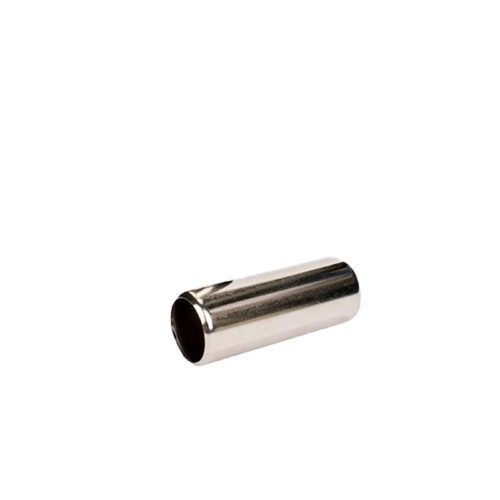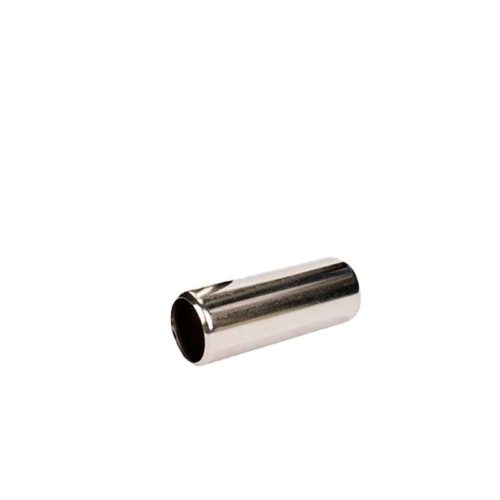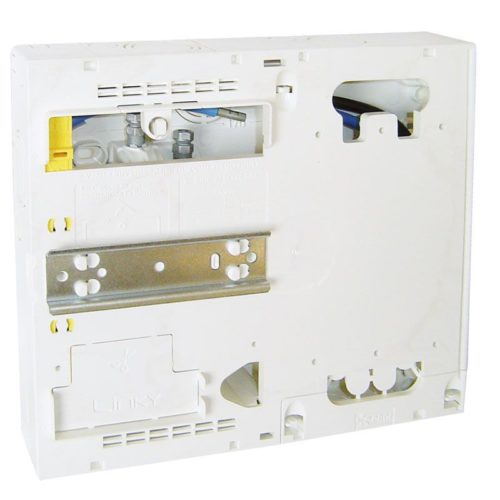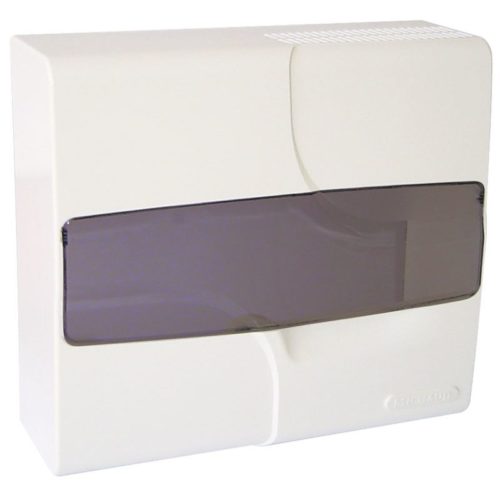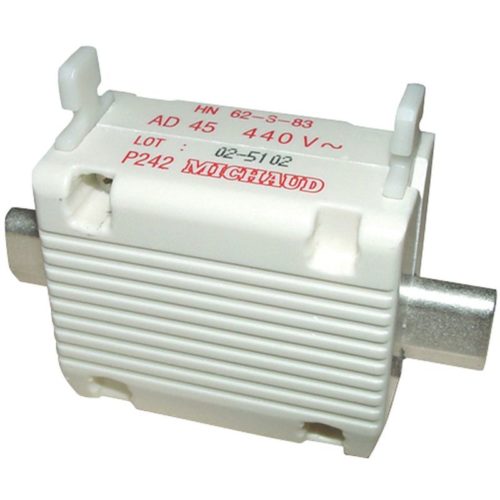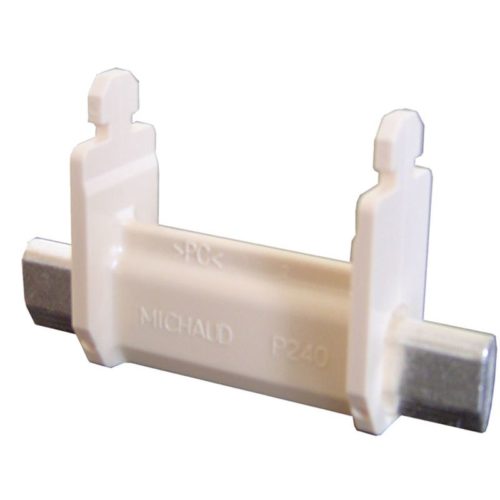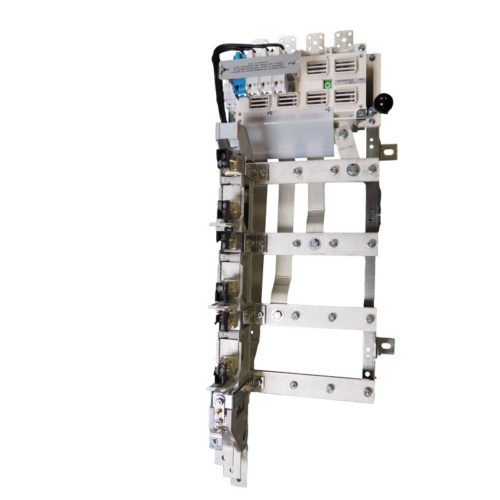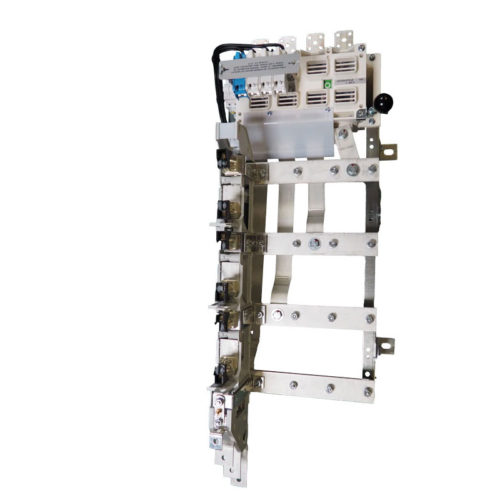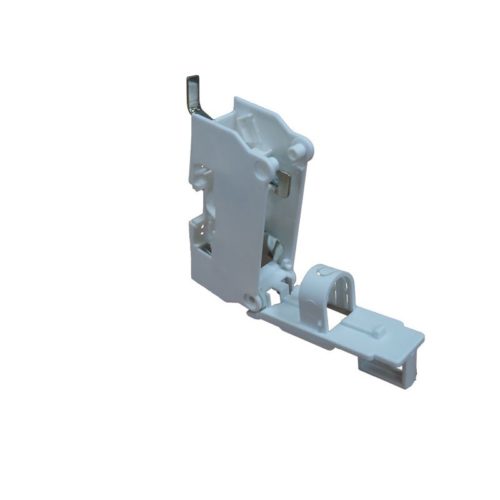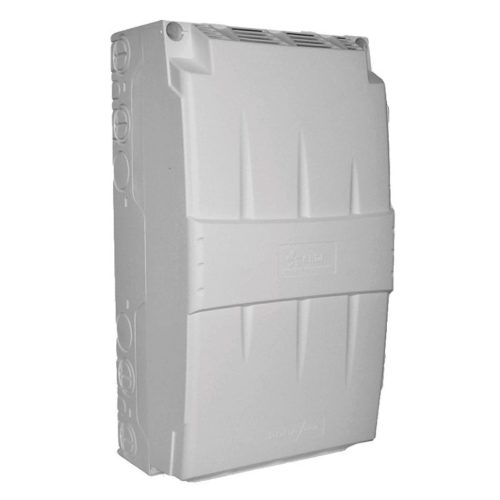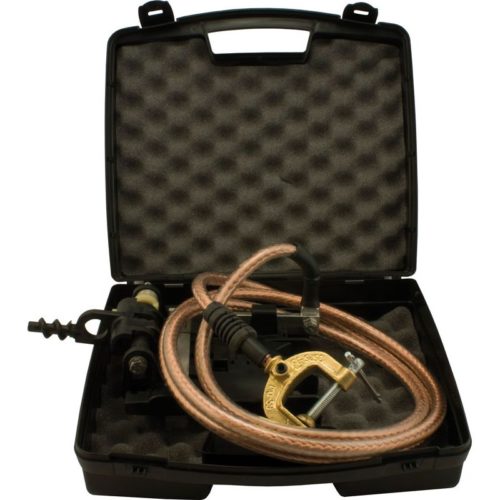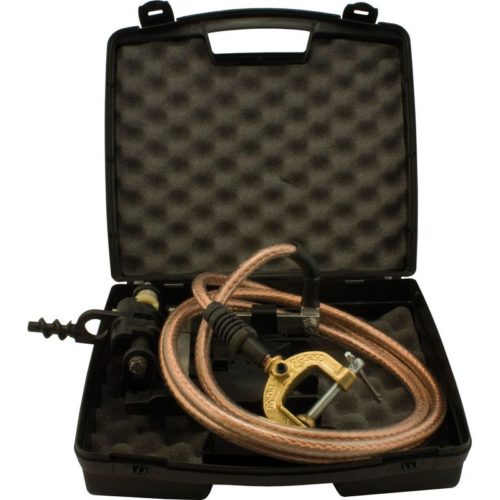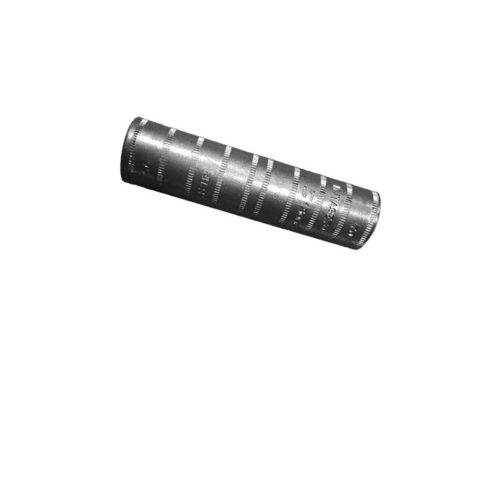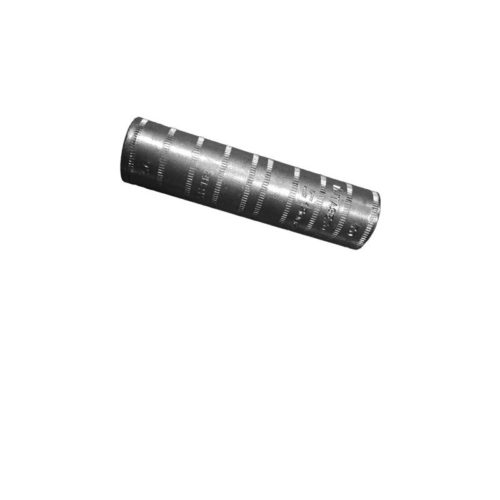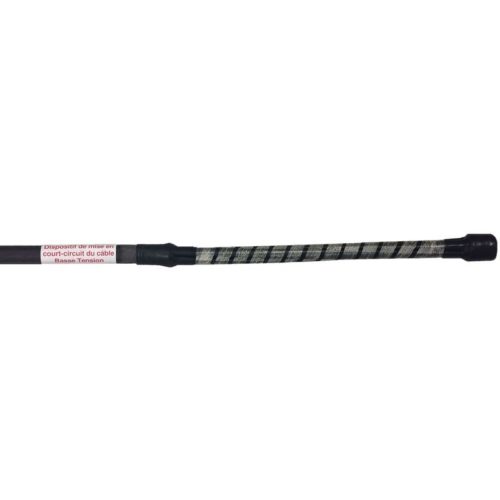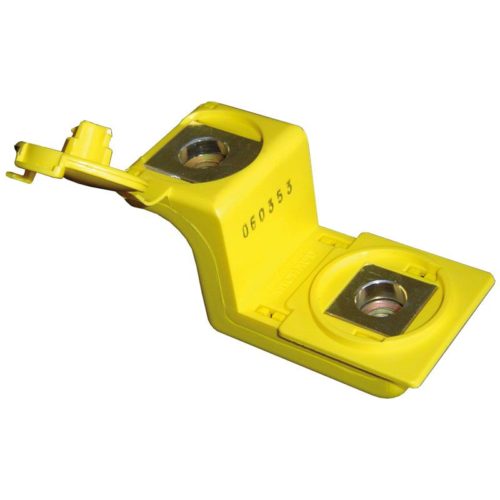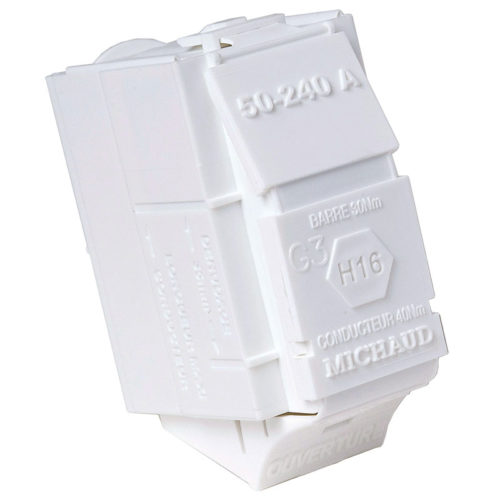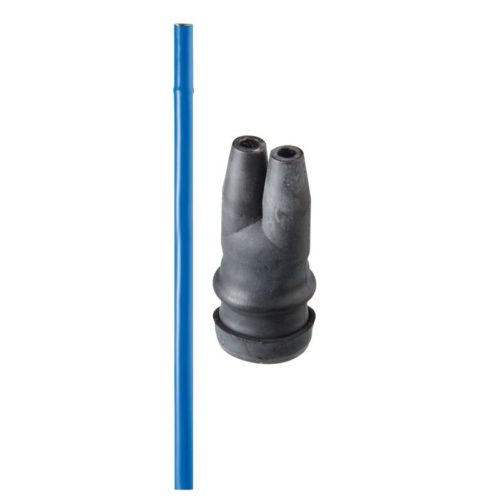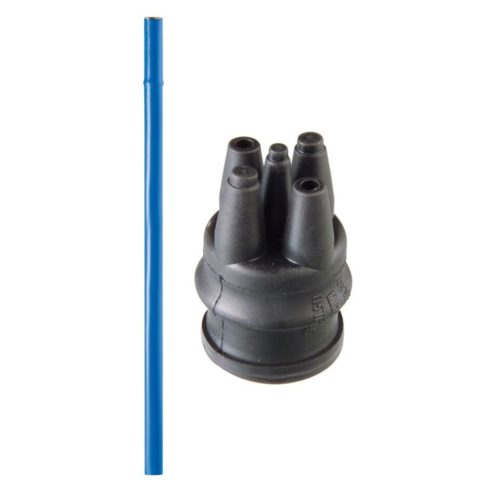-
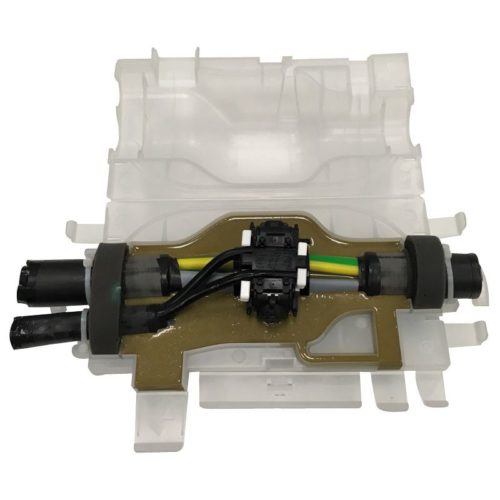
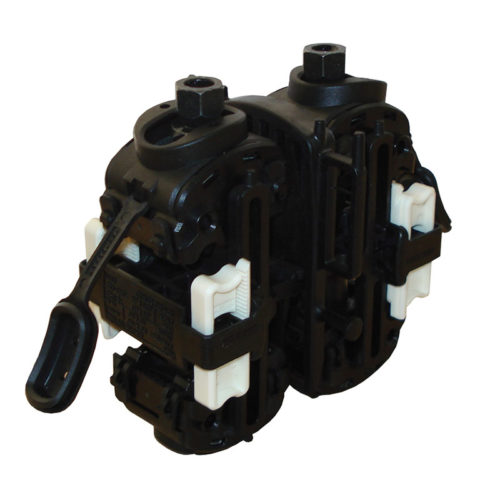 The RING connector is designed to establish a tap connection on low voltage underground networks. It is installed inside an underground box. It is used on a main cable, with synthetic insulation, of type: - Circular or sectoral, - Copper or aluminium, - Solid or stranded core. The underground box enables the tap connection from an underground network and for every conductors type (stranded, solid, multi-stranded, round or sectoral). It comprises the connector, the resin, the box and accessories according to the local standard.
The RING connector is designed to establish a tap connection on low voltage underground networks. It is installed inside an underground box. It is used on a main cable, with synthetic insulation, of type: - Circular or sectoral, - Copper or aluminium, - Solid or stranded core. The underground box enables the tap connection from an underground network and for every conductors type (stranded, solid, multi-stranded, round or sectoral). It comprises the connector, the resin, the box and accessories according to the local standard. -
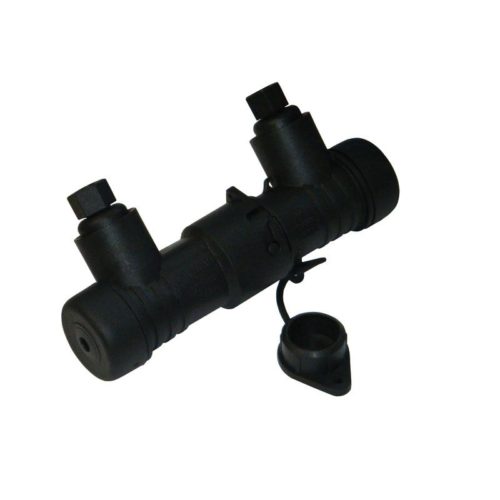
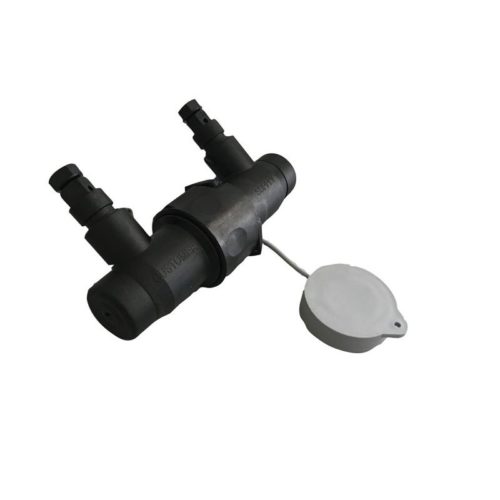 This cutout sleeve is designed to receive a 22x58 fuse cartridge, a neutral tube or a mini-switch. It is used in no mechanical load situations. It is equipped with mechanical tightening terminals allowing its installation using a simple spanner. Opening and closing of the cutout can be performed under a load of 63A maximum.
This cutout sleeve is designed to receive a 22x58 fuse cartridge, a neutral tube or a mini-switch. It is used in no mechanical load situations. It is equipped with mechanical tightening terminals allowing its installation using a simple spanner. Opening and closing of the cutout can be performed under a load of 63A maximum. -
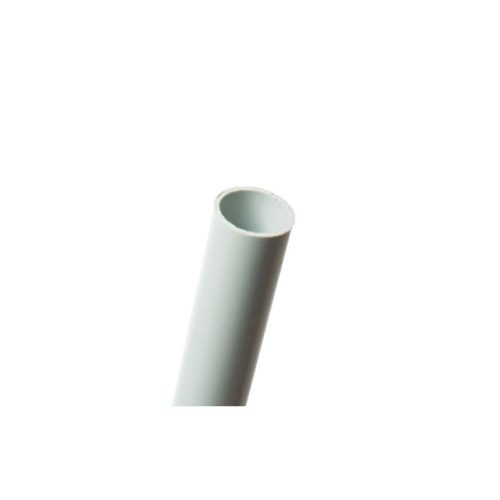
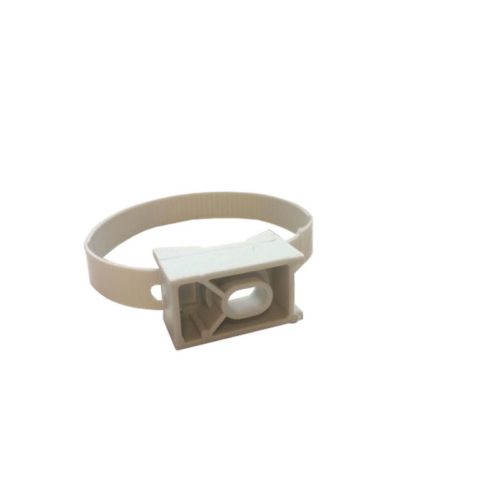 The IRO tube is used outside to allow mechanical protection round electrical cables. The junction sleeve allows to connect two IRO tubes. The connection sleeve allows a connection between the sheath and the general protection box. The T-sleeve and the elbow allow connection and adaptation of the circuit of the tubes. The mounting bracket allows to set the sheath beside a facade.
The IRO tube is used outside to allow mechanical protection round electrical cables. The junction sleeve allows to connect two IRO tubes. The connection sleeve allows a connection between the sheath and the general protection box. The T-sleeve and the elbow allow connection and adaptation of the circuit of the tubes. The mounting bracket allows to set the sheath beside a facade. -
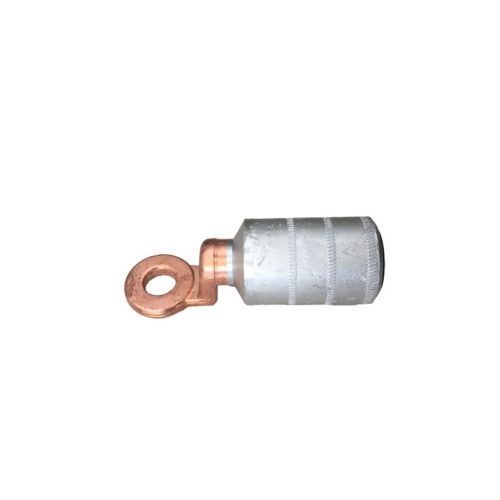
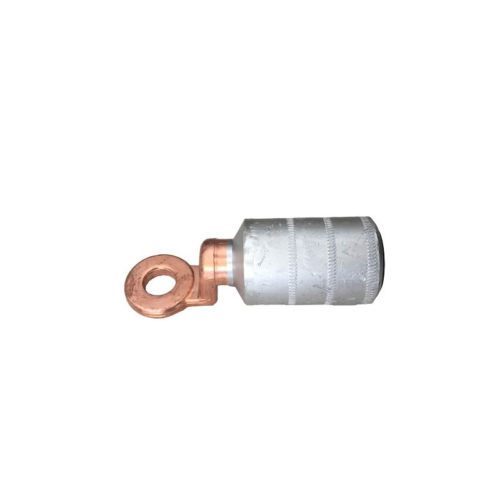 The tubular lug is designed to connect cable. It is made of tinplated copper (by electrolysis). It is manufactured with an inspection hole and socketing. It is implemented with hexagonal compressed connection. It allows copper and aluminium conductors. This lug meets the requirement of the NFC 20-130 standard. The friction welded lug is used to connect aluminium bare conductors to copper equipment terminals. It is used for industrial or indoor applications. This lug is implemented by crimping and out of traction. This lug meets the requirement of the NF C 63-061 standard. The Al/Cu tinned aluminium lug is used to connect aluminium bare conductors to copper equipment terminals. It is applied with a deep crimping.
The tubular lug is designed to connect cable. It is made of tinplated copper (by electrolysis). It is manufactured with an inspection hole and socketing. It is implemented with hexagonal compressed connection. It allows copper and aluminium conductors. This lug meets the requirement of the NFC 20-130 standard. The friction welded lug is used to connect aluminium bare conductors to copper equipment terminals. It is used for industrial or indoor applications. This lug is implemented by crimping and out of traction. This lug meets the requirement of the NF C 63-061 standard. The Al/Cu tinned aluminium lug is used to connect aluminium bare conductors to copper equipment terminals. It is applied with a deep crimping. -
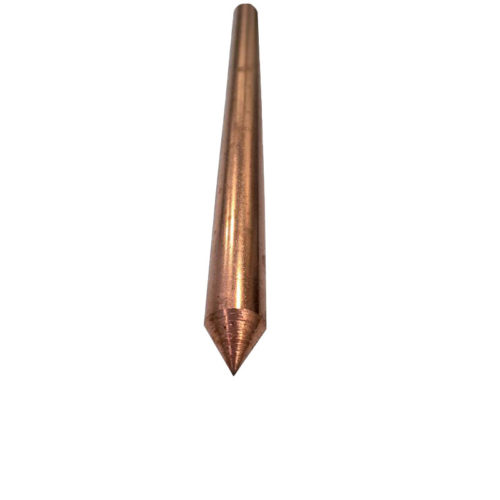
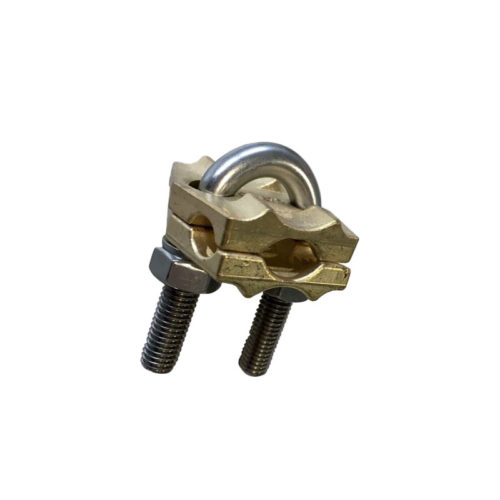 This earth rod is used for the power networks earth system. The copper coating made by electrolytic process gives a resistance to corrosion as well as a good conductivity. The reference standards are EN 50 164-2 and EN 62 561-2. The brass clamp with stainless steel bolts is designed to establish a connection between the earth rod and the conductor. The cable can be fixed radially or axially through the "U" bolt clamp. The round connection clamp can be in bronze. These brass driving spikes and heads are designed to protect the earth rod during the installation. They enable to preserve the copper coating and its technical features. The taper coupling is made of brass. It allows the junction between two unthreaded earth rods with nominal diameter 16mm.
This earth rod is used for the power networks earth system. The copper coating made by electrolytic process gives a resistance to corrosion as well as a good conductivity. The reference standards are EN 50 164-2 and EN 62 561-2. The brass clamp with stainless steel bolts is designed to establish a connection between the earth rod and the conductor. The cable can be fixed radially or axially through the "U" bolt clamp. The round connection clamp can be in bronze. These brass driving spikes and heads are designed to protect the earth rod during the installation. They enable to preserve the copper coating and its technical features. The taper coupling is made of brass. It allows the junction between two unthreaded earth rods with nominal diameter 16mm. -
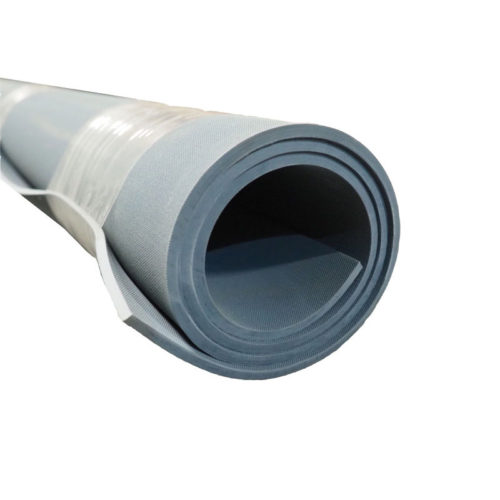
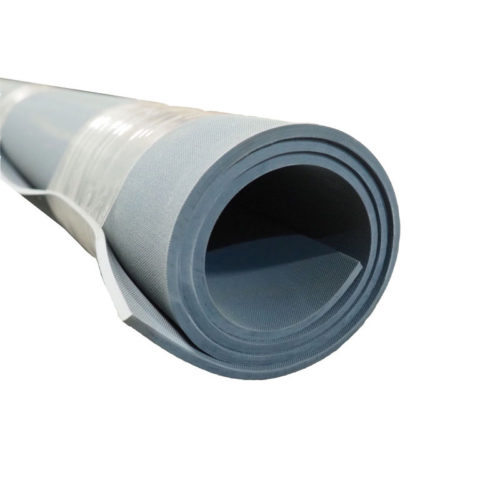 This mat is used to protect the fitter working area from contact voltage, during electrical work, without load in HV context and under load in LV one. Several models are available from class 0 to class 4. The insulating ladder protects the fitter from current voltage during electrical installation works.
This mat is used to protect the fitter working area from contact voltage, during electrical work, without load in HV context and under load in LV one. Several models are available from class 0 to class 4. The insulating ladder protects the fitter from current voltage during electrical installation works. -
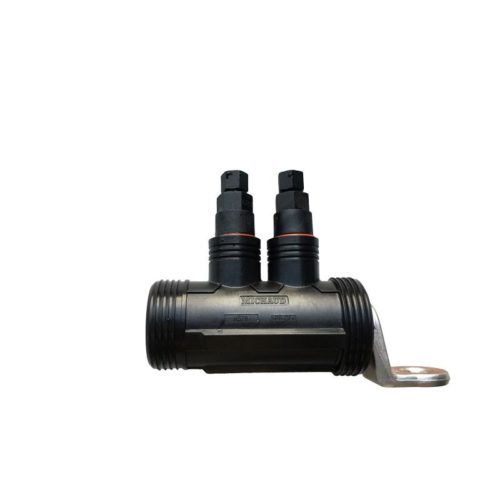
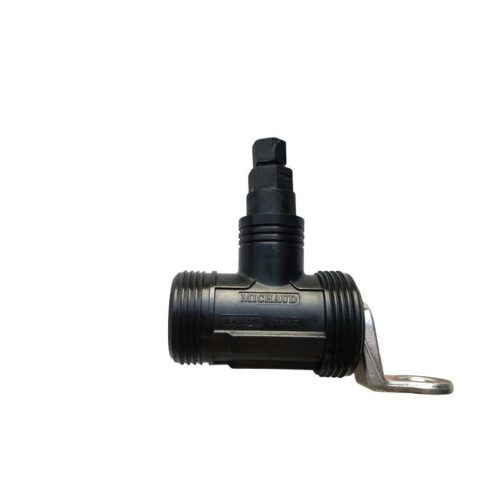 These preinslated lugs with mechanical tightening are used to connect aerial aluminum or copper conductors, solid or stranded round core, to copper equipment terminals. They are to be used without mechanical load. They are made of tinned copper which allows compatibility to copper and aluminium. The connection of the conductor is ensured by one or two shear head screws, for optimal tightening.
These preinslated lugs with mechanical tightening are used to connect aerial aluminum or copper conductors, solid or stranded round core, to copper equipment terminals. They are to be used without mechanical load. They are made of tinned copper which allows compatibility to copper and aluminium. The connection of the conductor is ensured by one or two shear head screws, for optimal tightening. -
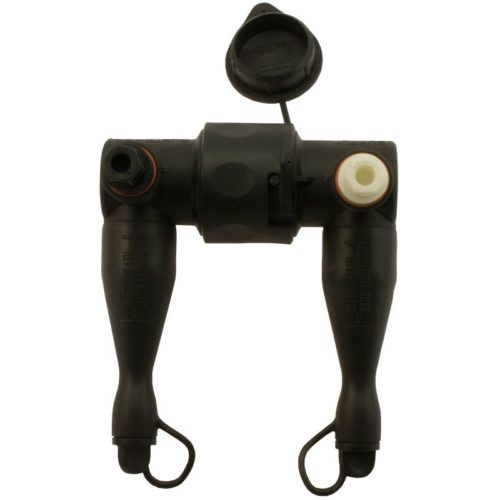
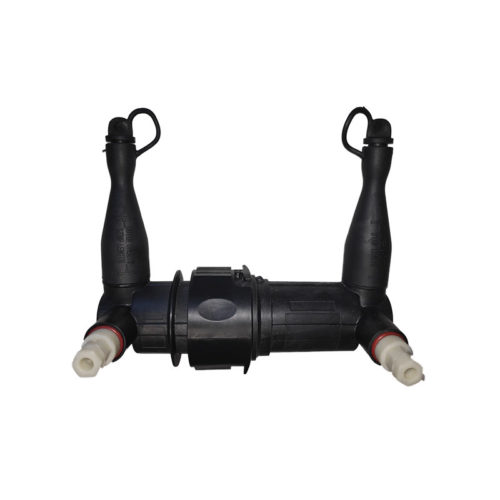 This Fuse Insulation Piercing Pit Connector (IPPC) is designed to receive a neutral tube, a mini-switch or a 100A maximum, size 22x58 fuse cartridge. It is used to connect a customer service line to an underground conductor. It is installed in a pit and can operate partially and temporary immersed in water. It is equipped with mechanical tightening terminals allowing its installation on a conductor using a simple spanner.
This Fuse Insulation Piercing Pit Connector (IPPC) is designed to receive a neutral tube, a mini-switch or a 100A maximum, size 22x58 fuse cartridge. It is used to connect a customer service line to an underground conductor. It is installed in a pit and can operate partially and temporary immersed in water. It is equipped with mechanical tightening terminals allowing its installation on a conductor using a simple spanner. -
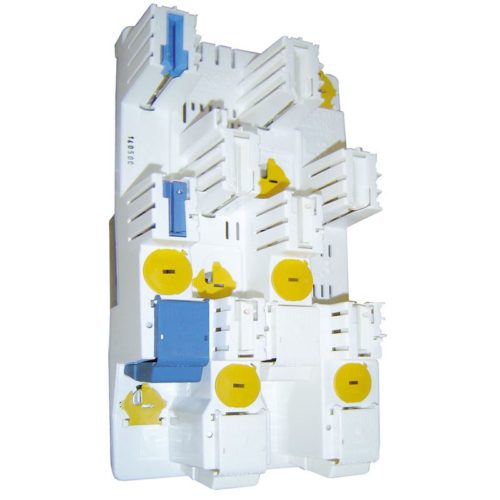
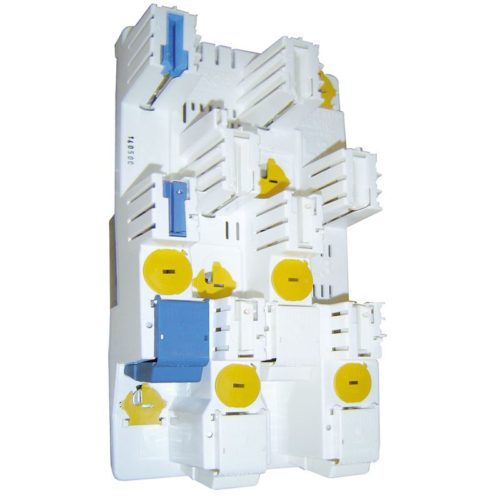 The REMIC module type RRCP offers a network outlet that can be cut (400 A function) or protected using maximum 200A fuses 115mm size 2 (200A function). It is installed on the M12 standardised connection terminals of the sets of bars supports. It is mainly used for supplying a collective or individual service with supervised power.
The REMIC module type RRCP offers a network outlet that can be cut (400 A function) or protected using maximum 200A fuses 115mm size 2 (200A function). It is installed on the M12 standardised connection terminals of the sets of bars supports. It is mainly used for supplying a collective or individual service with supervised power. -
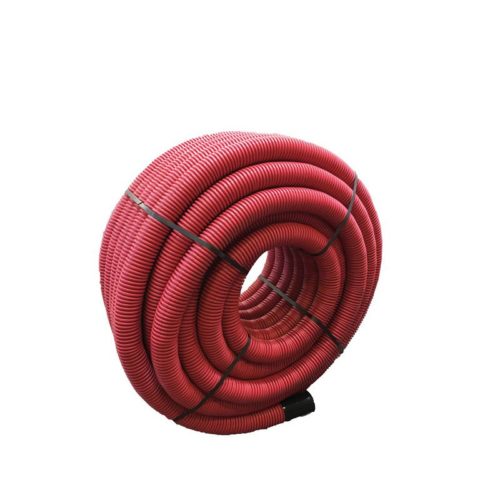
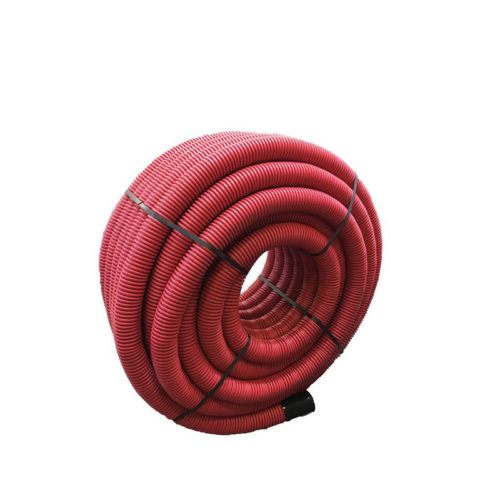 This sheath is used for the protection of underground cables. It is available in ring (with draw needle) or in bar. The junction sleeve allows connection between two ends of sheaths. The seperator allows to facilitate the installation of sheaths and to split each one. The sheath end cap allows to seal the sheath by closing its end.
This sheath is used for the protection of underground cables. It is available in ring (with draw needle) or in bar. The junction sleeve allows connection between two ends of sheaths. The seperator allows to facilitate the installation of sheaths and to split each one. The sheath end cap allows to seal the sheath by closing its end. -

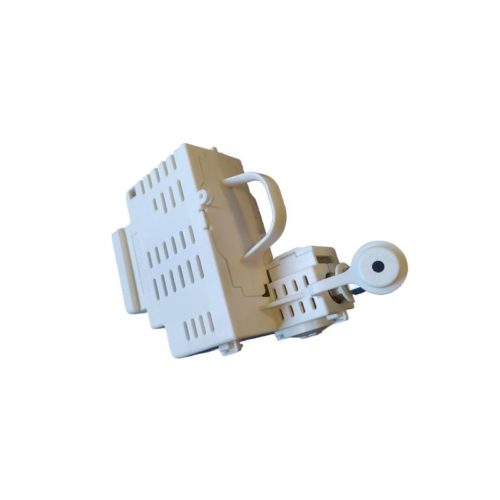 The fuse service module exists in 3 versions: 60A, 90A and 100A available in single or three phase kits depending on the model. In variation of the fused neutral, a triple neutral is possible. It is installed on the M12 standardized connection terminals of the set of bars support. It is used to tap a single or three phase service connection ensuring protection through fuses size 00 (60A and 90A modules) or 22x58 (100A module). The multitap connection module comprises 1 neutral and 3 phases. It allows a maximum of 3 single phase or 3 three-phase services to be connected. It is installed on the M12 standardized connection terminals of the set of bars support. It is mainly used when the AD fuses are installed in the customer premises.
The fuse service module exists in 3 versions: 60A, 90A and 100A available in single or three phase kits depending on the model. In variation of the fused neutral, a triple neutral is possible. It is installed on the M12 standardized connection terminals of the set of bars support. It is used to tap a single or three phase service connection ensuring protection through fuses size 00 (60A and 90A modules) or 22x58 (100A module). The multitap connection module comprises 1 neutral and 3 phases. It allows a maximum of 3 single phase or 3 three-phase services to be connected. It is installed on the M12 standardized connection terminals of the set of bars support. It is mainly used when the AD fuses are installed in the customer premises. -
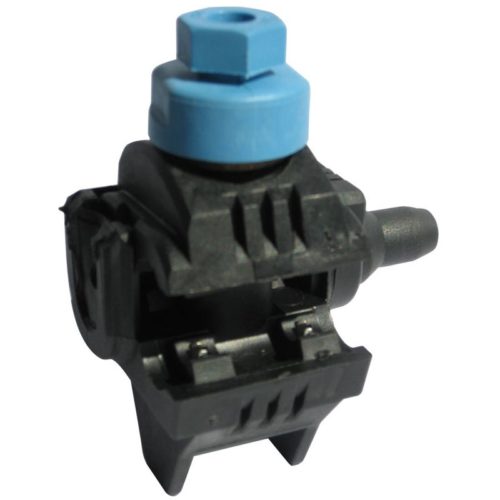
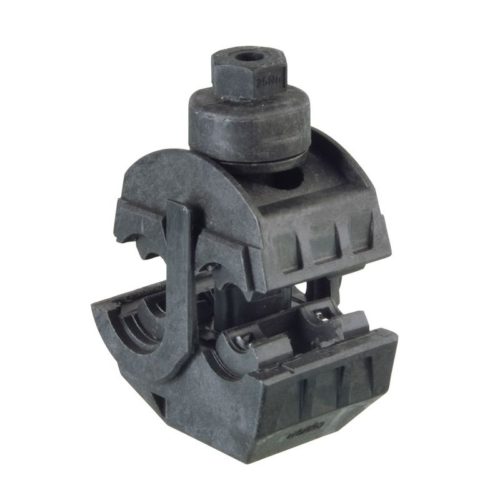 This connector is designed to be used with underground low voltage network for tapping or junction applications. It is implemented in underground cast or injected boxes. It can be used on aluminium, circular or sectoral type cables with paper or synthetic insulation. The underground network box is designed to establish the junction or tap from a round or sectoral underground network (as defined in the NF C 33-210 standard).
This connector is designed to be used with underground low voltage network for tapping or junction applications. It is implemented in underground cast or injected boxes. It can be used on aluminium, circular or sectoral type cables with paper or synthetic insulation. The underground network box is designed to establish the junction or tap from a round or sectoral underground network (as defined in the NF C 33-210 standard). -
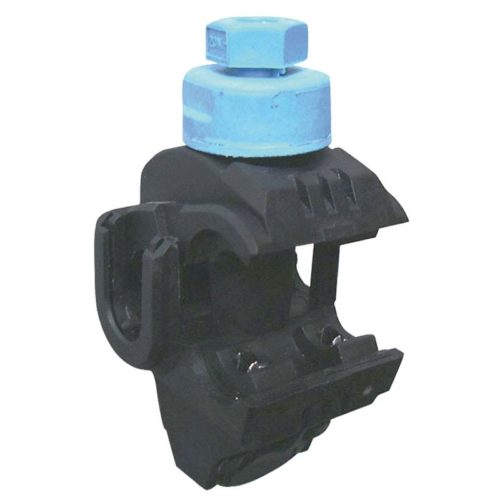
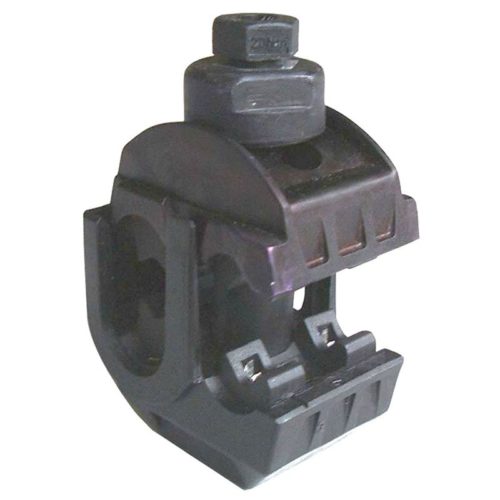 This connector is designed to establish a tap connection on low voltage underground networks. It is located in underground cast or injected boxes. It is used on a main cable, with synthetic or paper insulation, of type: - Circular or sectoral, - Copper or aluminium, - Solid or stranded core. The underground service box is designed to establish a single or double tap from one or 2 line connections from an underground network made up of round or sectoral conductors (as defined in NF C 33-210).
This connector is designed to establish a tap connection on low voltage underground networks. It is located in underground cast or injected boxes. It is used on a main cable, with synthetic or paper insulation, of type: - Circular or sectoral, - Copper or aluminium, - Solid or stranded core. The underground service box is designed to establish a single or double tap from one or 2 line connections from an underground network made up of round or sectoral conductors (as defined in NF C 33-210). -
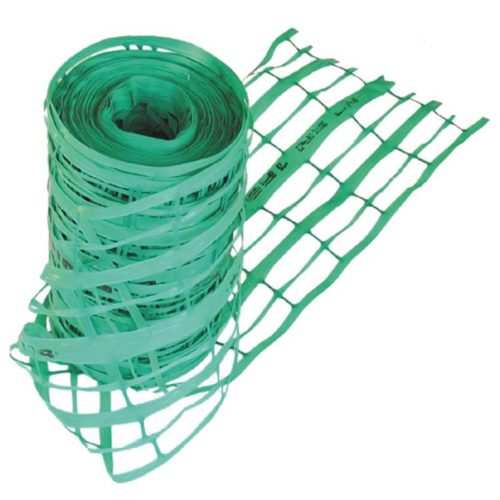
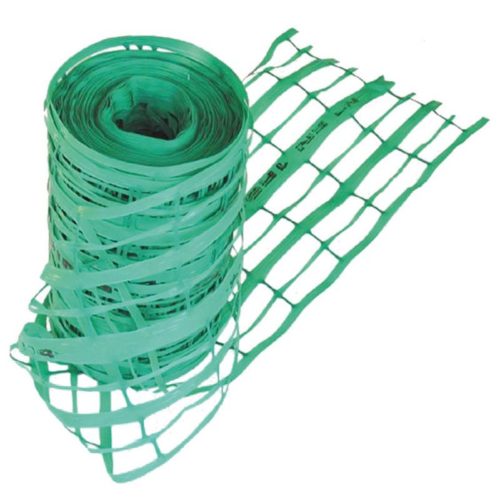 The protection plate roll (PPR) is designed to protect underground networks from extraction (pipes and/ or cables). It can be used for underground network under low load, engineering structure crossing, or in area of high density network. The warning netting is designed to indicate the presence of low voltage power line cables buried in the ground.
The protection plate roll (PPR) is designed to protect underground networks from extraction (pipes and/ or cables). It can be used for underground network under low load, engineering structure crossing, or in area of high density network. The warning netting is designed to indicate the presence of low voltage power line cables buried in the ground.
